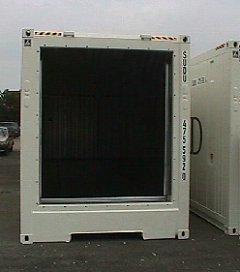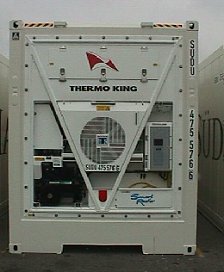Today, container walls comprise CFC-free polyurethane foam with a plastic or aluminum coating on the outside and stainless steel or aluminum on the inner side. The walls are introduced into the container frame and subsequently filled with foam which helps to mechanically strengthen the container. It is extremely important when introducing the foam that no areas with coarse pore foam or even cavities build up, as they would act as thermal bridges and - in connection with CA - would be potential sources of leakage.
ISO 1496-2 also stipulates the requirements of the container with regard to its mechanical loading capacity, quality of insulation and leakproofness. The mechanical tests will not be discussed here.
The heat transition coefficient of the insulation, according to ISO, must be no more than 0.4 W/m²°C.
Leakproofness is tested by checking that the airflow required to maintain a pressure of 250 Pa above atmospheric in the container does not exceed 10 m³/h. This test applies to the container structure and the door gaskets so that all other openings, such as the air cooler drainage, the water drainage apertures in the floor and the fresh air flaps, are closed.
  |
| Figure 26: Refrigerated containers with and without integral refrigeration unit |